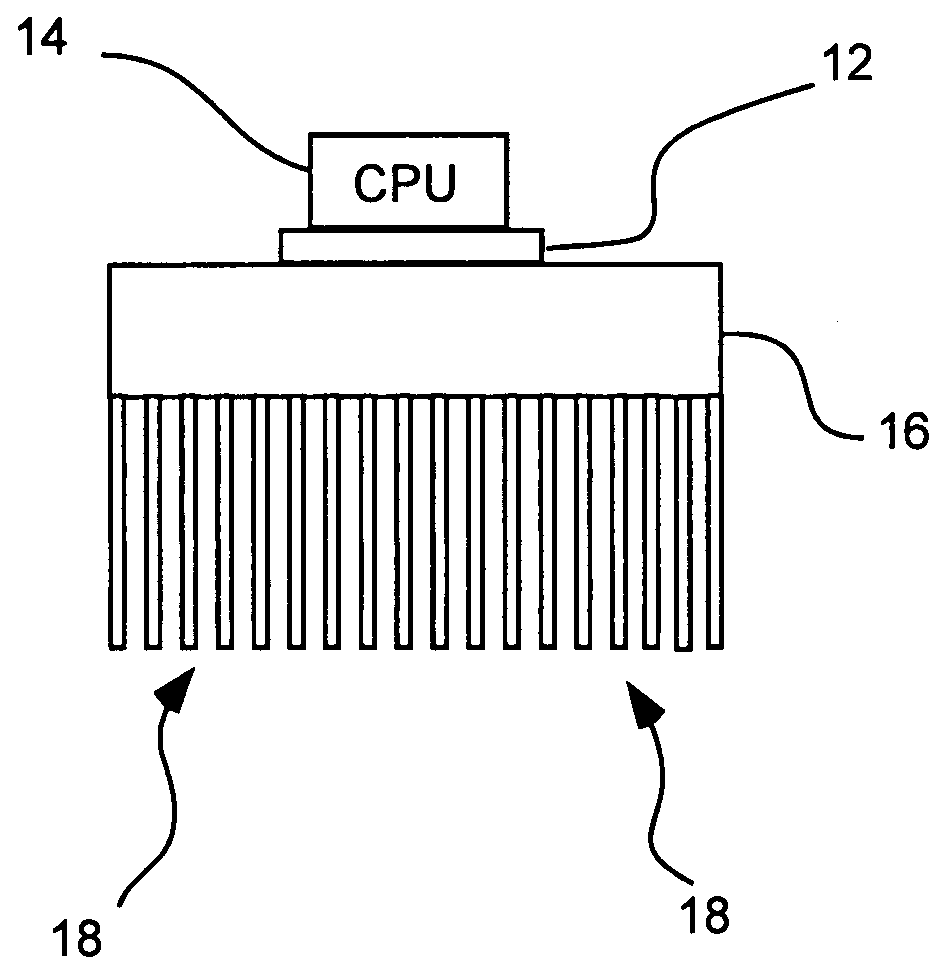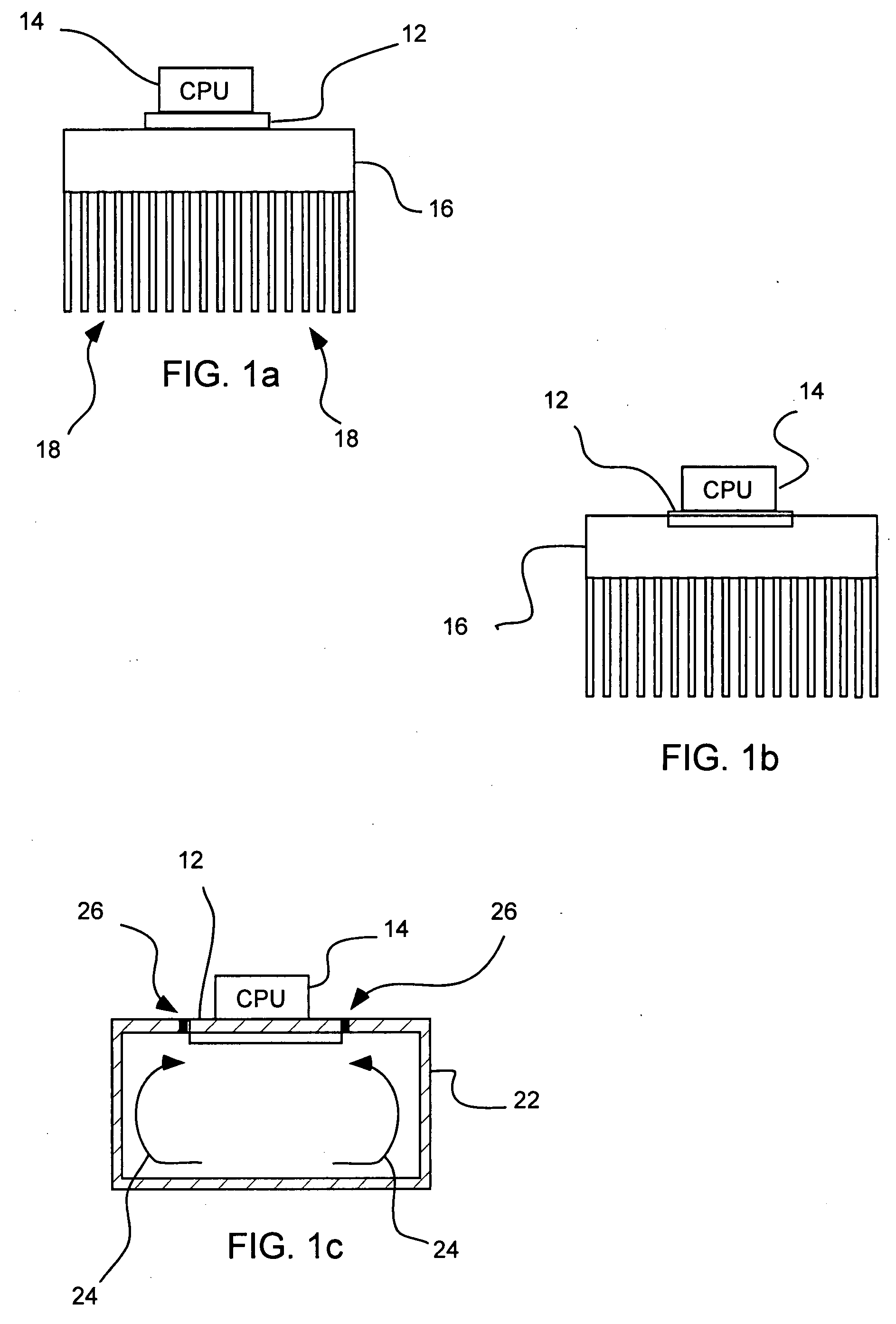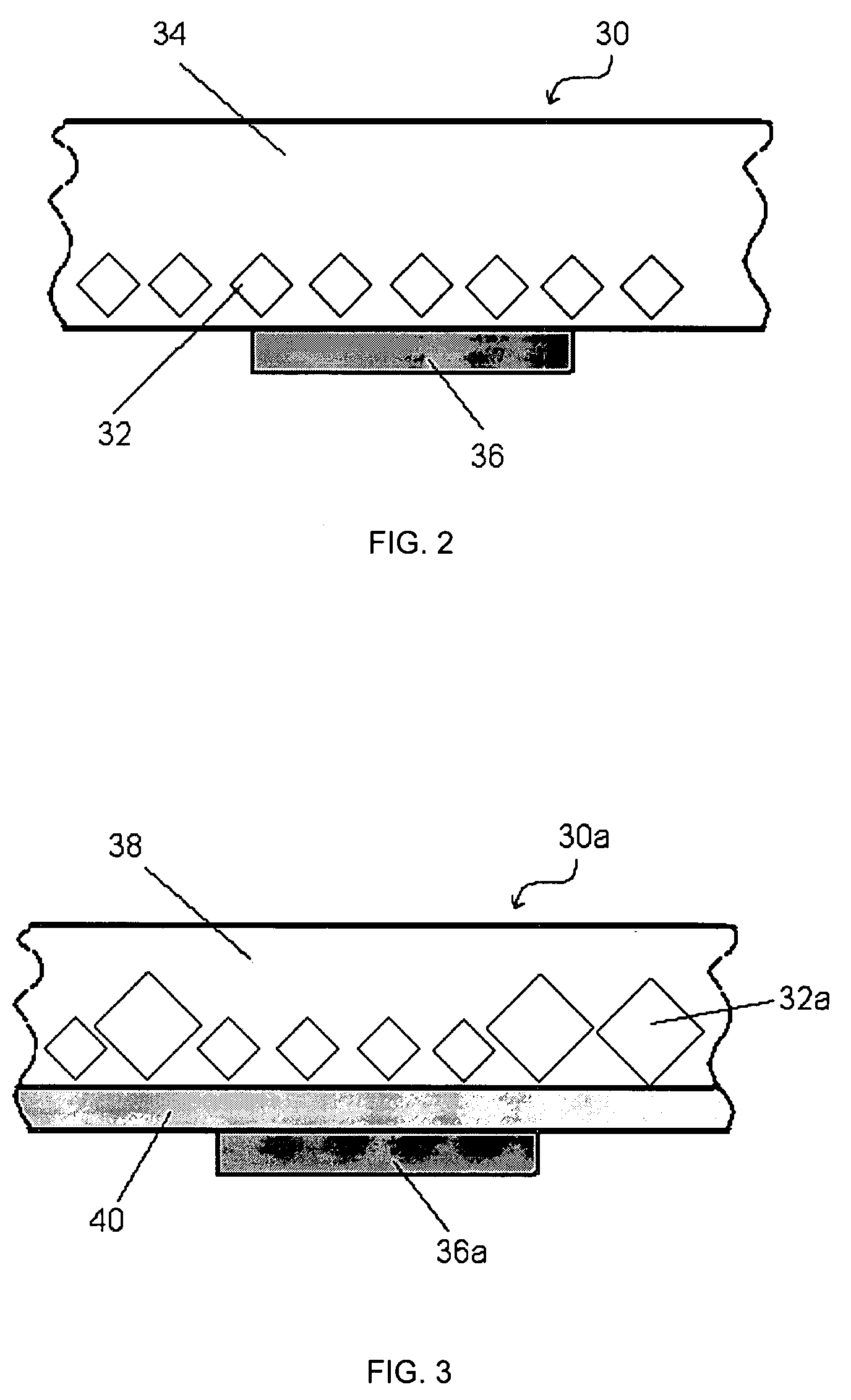Heat spreader having single layer of diamond particles and associated methods
a diamond particle and heat spreader technology, applied in semiconductor devices, lighting and heating apparatus, semiconductor/solid-state device details, etc., can solve the problems of insufficient cooling of future generations of cpus, insufficient heat dissipation methods, and neglect of design phase, and achieve the effect of cementing diamond particles
- Summary
- Abstract
- Description
- Claims
- Application Information
AI Technical Summary
Benefits of technology
Problems solved by technology
Method used
Image
Examples
example 1
Method of Making a Heat Spreader
[0086]Diamond particles of 30 / 40 U.S. mesh (Element Six SDB 1100) are thoroughly cleaned in acetone with ultrasonic vibration. A steel tray is fitted with a 100 micron film of deoxidized copper. A double sticking adhesive 25 microns thick is attached to the copper film. Diamond particles are spread onto the top of the adhesive layer and agitated by ultrasonic vibrations to increase the packing efficiency. The tray is overturned to discard diamond particles that are not stuck to the adhesive. Once loose particles are discarded, the tray is turned right side up again. A 2 mm thick plate of pure aluminum is placed on top of the diamond particles. The arrangement is illustrated in FIG. 5a, wherein the copper layer with adhesive 46 has a layer of diamond particles 48 covered by a plate of aluminum 50. The tray is then placed in a vacuum furnace and heated to 680° C. The aluminum infiltrates between the gaps of the diamond particles. The tray is allowed to ...
example 2
Method of Making Multiple Heat Spreaders
[0087]The process of Example 1 is followed, except that strips of copper are laid down over the adhesive layer prior to introducing diamond particles. The strips can be adjusted to create 20 mm squares of exposed adhesive.
[0088]Once the tray is allowed to cool, the aluminum top is ground smooth and the plate is wire-EDM cut along the middle lines of the copper stripe dividers. This produces multiple heat spreaders of about 40 mm. Each square contains about 1600 crystals (about 4 carats, at an approximate cost of 80 cents), with flat faces firmly embedded in the copper film. FIG. 6 illustrates an exemplary plate 52 of multiple heat spreaders prior to cutting, in accordance with the present example. The copper strips (covered with aluminum) 54, separate the individual heat spreaders 56 which include a single diamond layer.
[0089]Such heat spreaders can be soldered directly to a computer chip and / or soldered onto a heat sink or a heat pipe. The th...
example 3
Heat Spreader with Silicon
[0090]Same as Example 1, except molten silicon is used in place of aluminum, and infiltration is done at 1450° C. The final product is an electrical insulator as opposed to the electrically conductive copper. Additionally, the composite thermal expansion coefficient is smaller than in Example 1.
[0091]If excessive diffusion takes place at the interface of the infiltrant and the copper film, the thermal conductivity can be reduced. Additionally, the thin copper film can be dissolved. In this case, a flash of a more refractory metal can be coated on the copper film to become a chemical barrier. For example, tungsten can be sputtered onto the copper film. The thermal conductivity of tungsten is not low and it is very thin (e.g. nanometers), so the thermal resistance can be negligible.
PUM
| Property | Measurement | Unit |
|---|---|---|
| temperature | aaaaa | aaaaa |
| pressures | aaaaa | aaaaa |
| pressure | aaaaa | aaaaa |
Abstract
Description
Claims
Application Information
 Login to View More
Login to View More - R&D
- Intellectual Property
- Life Sciences
- Materials
- Tech Scout
- Unparalleled Data Quality
- Higher Quality Content
- 60% Fewer Hallucinations
Browse by: Latest US Patents, China's latest patents, Technical Efficacy Thesaurus, Application Domain, Technology Topic, Popular Technical Reports.
© 2025 PatSnap. All rights reserved.Legal|Privacy policy|Modern Slavery Act Transparency Statement|Sitemap|About US| Contact US: help@patsnap.com



